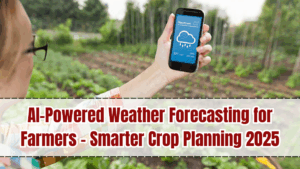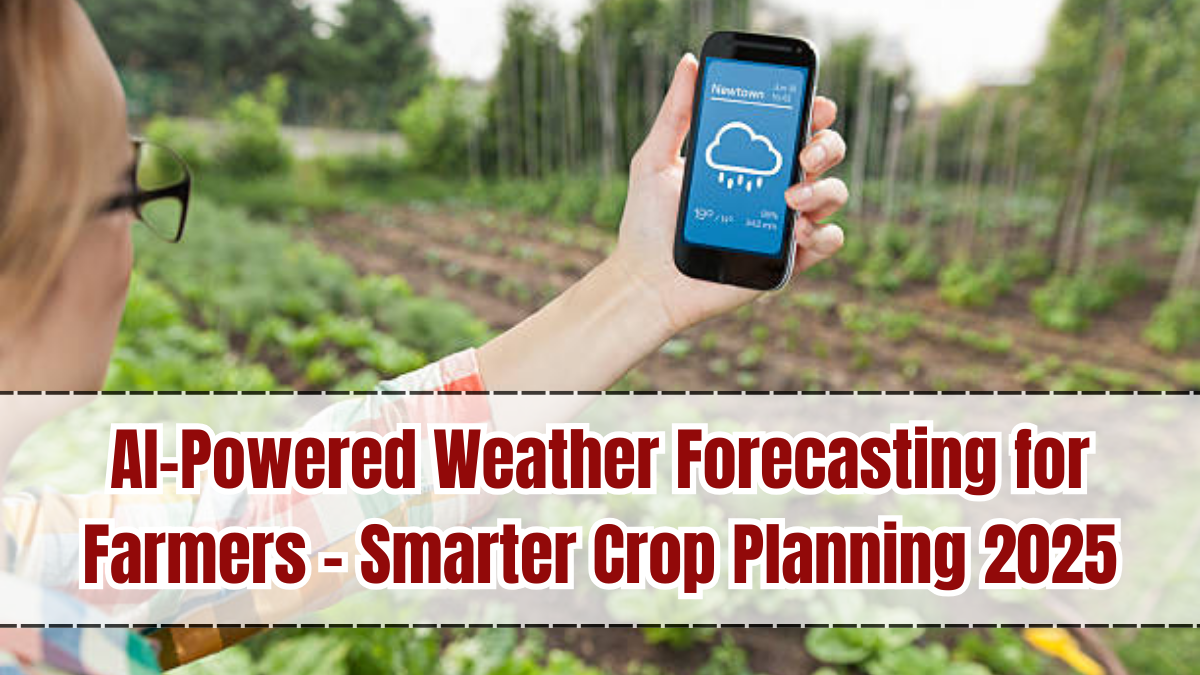For generations, farmers have depended on traditional knowledge, local signs, and seasonal patterns to predict weather. However, with climate change creating unpredictable rainfall, droughts, and storms, these methods are no longer reliable. In 2025, AI-Powered Weather Forecasting for Farmers is offering a breakthrough solution by delivering accurate, localized, and real-time predictions. This innovation is reshaping crop planning, irrigation, and risk management, making agriculture more resilient and sustainable.

What is AI-Powered Weather Forecasting?
AI-powered weather forecasting is a system that uses artificial intelligence, satellite data, IoT sensors, and predictive models to analyze weather patterns at micro levels. Unlike generic forecasts, AI provides village-level and crop-specific predictions, ensuring farmers make smarter decisions.
Key features include:
-
Hyper-local rainfall alerts.
-
Predictions on droughts, floods, and storms.
-
Soil moisture and temperature insights.
-
Seasonal trend analysis for better crop selection.
-
Automated notifications through mobile apps and SMS.
Why It Matters in 2025
Agriculture is highly vulnerable to climate uncertainty, and farmers often face losses due to poor forecasting. The importance of AI weather forecasting in 2025 is clear:
-
Protecting Crops: Farmers can prepare for heavy rain, frost, or drought in advance.
-
Water Management: Accurate irrigation schedules save water and energy.
-
Reducing Losses: Timely alerts prevent large-scale crop damage.
-
Boosting Productivity: Farmers choose crops based on reliable seasonal insights.
-
Insurance Benefits: Accurate data helps in faster crop insurance claims.
This makes AI weather forecasting a lifeline for farmers battling climate change.
Benefits of AI Weather Forecasting for Farmers
The adoption of AI weather systems is transforming rural agriculture. Major benefits include:
-
Localized Forecasts: Predictions tailored for specific villages instead of broad regions.
-
Cost Savings: Farmers avoid unnecessary irrigation or fertilizer use.
-
Improved Planning: Helps in crop rotation, sowing dates, and harvesting schedules.
-
Disaster Preparedness: Farmers receive early warnings about extreme weather.
-
Market Advantage: Better planning ensures consistent crop supply, improving incomes.
Role of Technology
Technology is the backbone of AI-powered forecasting systems. In 2025, the following tools are making farming smarter:
-
AI algorithms analyzing decades of climate data.
-
IoT sensors in fields monitoring soil, humidity, and temperature.
-
Satellite imagery providing real-time cloud and rainfall updates.
-
Mobile apps delivering instant alerts in local languages.
-
Machine learning models that improve accuracy with each season.
This combination ensures farmers have precise, actionable weather insights at their fingertips.
Government and Private Sector Initiatives
Governments, NGOs, and private tech companies are heavily investing in AI weather services for farmers. Initiatives include:
-
Free SMS weather alerts for rural farmers.
-
Mobile apps integrated with crop advisory services.
-
Subsidized IoT weather devices for small farmers.
-
Public-private partnerships with agri-tech startups.
-
Integration with crop insurance programs to speed up claim settlements.
In countries like India, Kenya, and Brazil, these initiatives are already helping millions of farmers adopt climate-smart agriculture.
Future of AI in Weather Forecasting
The future of AI weather forecasting for farmers is even more advanced. By 2030, we can expect:
-
Voice-based AI assistants giving real-time weather advice in local dialects.
-
Drone-based weather monitoring for larger farmlands.
-
Blockchain integration to ensure data security and transparency.
-
Predictive farming models that suggest crops best suited for future conditions.
-
Global AI collaboration platforms that share data across nations for more accurate predictions.
With these advancements, farming will become more resilient, profitable, and climate-proof.
FAQs
What is AI-Powered Weather Forecasting for Farmers?
It is a system that uses artificial intelligence, satellites, and sensors to provide hyper-local, real-time weather predictions for farmers.
How does AI help farmers in crop planning?
AI forecasts guide farmers on when to sow, irrigate, and harvest crops, reducing risks and increasing productivity.
Is AI forecasting affordable for small farmers?
Yes, many governments and NGOs provide free or subsidized AI-based weather services via SMS and mobile apps.
What technology powers AI weather forecasting?
It uses AI algorithms, IoT devices, satellite imagery, and machine learning models to deliver accurate weather insights.
What is the future of AI weather forecasting?
Future systems will include drones, blockchain security, and voice-based AI assistants, making weather insights more accessible to every farmer.
Click here to know more.
